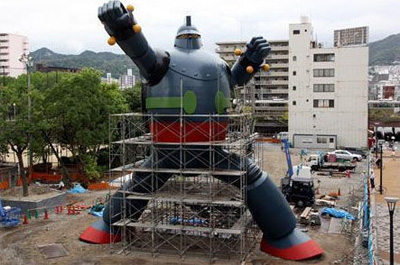Why Can’t Hollywood Compete with Japanese Giant Robots?
![]()
Yes I know James Cameron will make a billion dollars with Avatar. But you know what Cameron will never know how to do? Create a damn high quality giant robot that kids will want to buy thirty years from now! Shown above is the reason why: The Avatar AMP Suit (shown above) looks like a left over prop from the film Aliens:
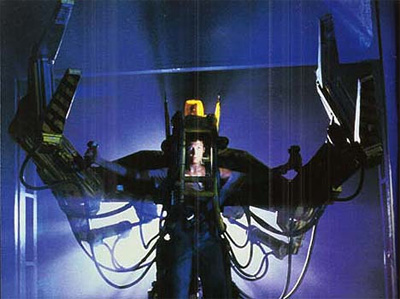
Yes that design was really cool in 1986 — that’s when Cameron wasn’t “king of the world” and he hired the likes of talented folks like Syd Mead to help out. Just to give you a comparison here’s a state-of-the-art anime robot from four years earlier in 1982:
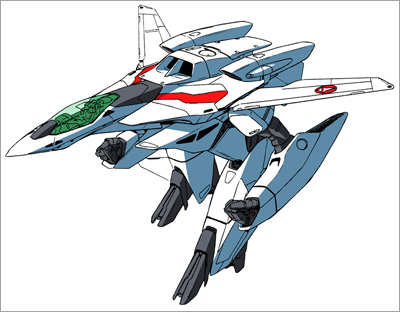
What you’re looking at above is the Gerwalk which transform from a fighter space craft to a walking robot from the anime series Macross, which Americans know as Robotech. Now let’s jump ahead to year 2009 to the very hip anime series Basquash! which features robots that are so low-cost to the characters that they are used to play an over sized game of basketball while the characters exchange snarky remarks (because to them this is just hanging out in the hood):
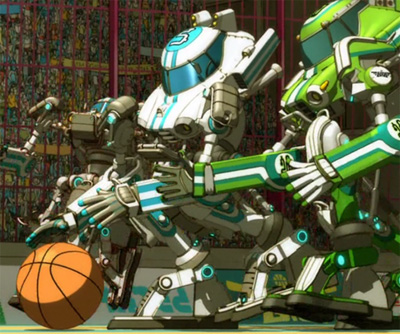
But now take a closer look at the actual design: That’s right, not only do these robots play basketball to amuse their owners — but they double as kitbashed low rider cars that you’d find in the hood in LA:
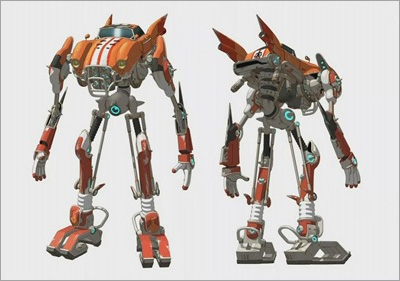
When you look at the creativity in a show like Basquash! suddenly James Cameron seems so vanilla. It comes down to a sheer lack of creativity in Hollywood, for example Japan has escaped the notion that a robot even has to look like a robot:

Not only is Mahoro Andou from Mahoromatic a robot (“More Human Than Human” as we say at the Tyrell Corporation) — but she’s was designed for the manga Mahoromatic over ten years ago in 1998! In the mean time us poor Americans are still stuck with this:
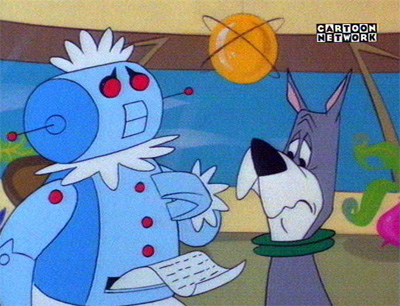
No wonder poor Astro looks so depressed! And just so you don’t accuse me of being a sexist, the quality of American male robot butlers are even more embarrassing to look at:
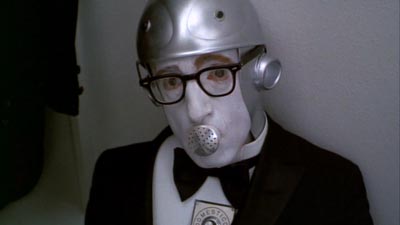
Now I know exactly what you’re thinking right now: “Oh sure the Japanese can design a pretty robot, but what about the raw fire power?” Well check this scene from the Big O anime series — now mind you that this was done on a television budget which is a fraction of a Hollywood film:
So it’s not the budget, it’s a matter of good old fashioned storytelling. Hollywood sees the robot as comedy relief or a prop where the anime studios aren’t afraid to give a starring role to a hunk of metal. True you might see an small exception from time to time like the live action Transformers films, but sadly even that is based on anime.
So at this point you may be asking just why are the Japanese are so damn good at making giant robots? Well here’s the dirty little secret that makes all the difference:
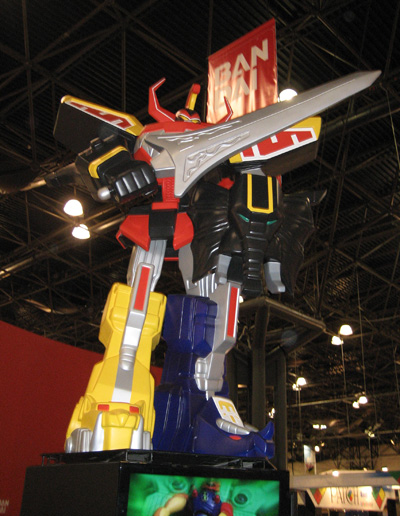
What you’re looking at is the Bandai booth from the New York City Toy Fair from earlier this year. Unlike Hollywood where toy companies and film companies are two different beasts — this isn’t the case in Japan.
Bandai started life as a toy company in 1900, and today own the field in Japan — but just as important is the fact that they also are a film and television powerhouse. So imagine if Disney and Hasbro were the same company: You’d have Bandai. But it even goes further than that since the videogame maker Namco is also a part of Bandai. So now take Disney, Hasbro and add Electronic Arts in for fun.
A secret to the multi-medium success of Bandai is that they don’t hamstring the creative aspects of the shows and films they create: Although the idea of making those shows toyable (and yes that’s an industry term) is part of their core corporate DNA.
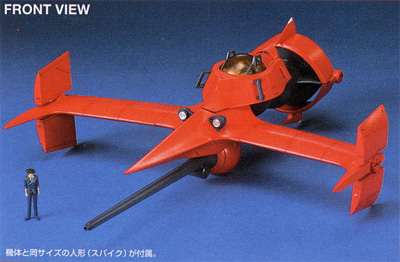
So for example when Bandai backed the anime series Cowboy Bebop they told director Shinichirō Watanabe “you can do anything you want, so long as the show has some spaceships.” The result is some amazing entertainment and some cool toys for the fanboys to buy for years to come.
Below: Tetsujin 28-go (known as Gigantor in United States) started life as a manga in 1956 — the robot is so beloved that a full scale version of it was built.
